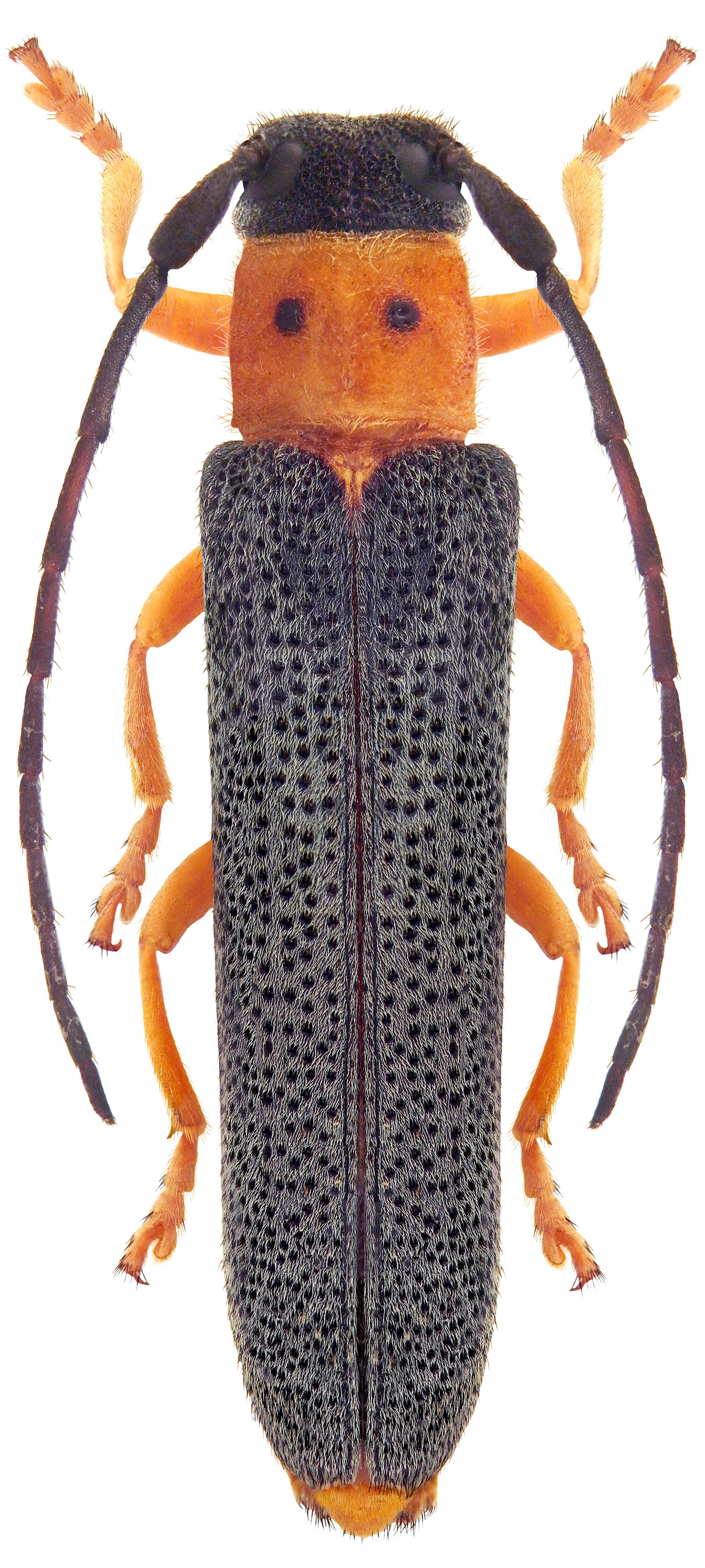Oberea oculata (original) (raw)

[Photo © David Navrátil, click on the picture for 4K resolution]
Oberea oculata, a common and widely distributed Palaearctic species, has been described from "Europa" as Cerambyx oculatus by Carl Linné in 1758 [❖].O. oculata is ecologically connected to various species of broad-leaved willows, but in Europe it prefers goat willow (Salix caprea). Typical habitats of the species are riparian stands, forest and road edges or ruderal plant communities with goat willow. Adults occur from June to August on leaves and twigs, where they feed on leaf tissue and young bark. The female lays eggs on live twigs or thin trunks, the larva forms a longitudinal gallery under the bark and gradually penetrates into the pith wood (see the dedicated page). The pupal cell in the pith wood is connected to the exit corridor and is usually up to 12 cm long. The life-cycle usually two years, but the development length always depends on a set of environmental conditions [✧].
Body length: 15 – 21 mm Life cycle: 2 – 3 years Adults in: June – September Host plant: willows (Salix spp.) Distribution: Palearctic realm The depicted living beetle was photographed in Laax environs (Surselva region, Graubünden kanton, Switzerland) on August 2, 2018. The mounted specimens were collected in Rasovna settlement environs (Litomyšl-Lány, Svitavy district, Pardubice region, East Bohemia, Czechia) on June 14, 2005.
Collected by Daniel Rydzi and David Navrátil
[❖]
Linné C.:
Systema naturæ per regna tria naturæ secundum classes, ordines, genera, species, cum characteribus, differentiis, synonymis, locis.
Systema naturae (Editio 10) Laur. Salvius, Holmiae 1: 824pp [page 394], 1758. [download]
[✧]
Sláma M.E.F.:
Tesaříkovití – Cerambycidae České republiky a Slovenské republiky.
[ Cerambycidae of the Czech Republic and Slovak Republic. ]
Milan Sláma private printing, Krhanice, 383pp [page 325-326], 1998 [ISBN: 80-238-2627-1]. [download]